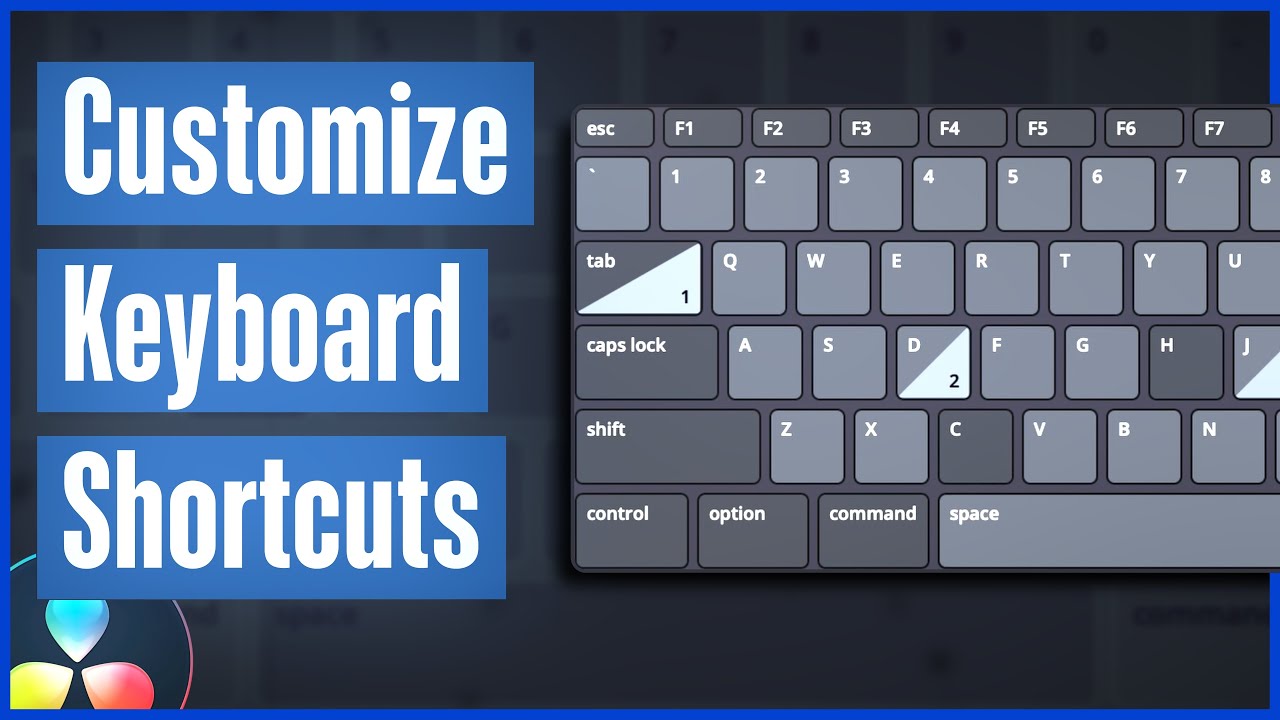
Introduction:
Efficiency is the cornerstone of productivity in any creative endeavor, and mastering keyboard shortcuts is a surefire way to enhance your workflow in DaVinci Resolve. With its powerful editing capabilities and versatile toolset, DaVinci Resolve empowers users to customize their editing experience by creating personalized keyboard shortcuts tailored to their unique preferences and editing style. In this extensive guide, we’ll delve into the depths of DaVinci Resolve’s customization options, exploring the process of creating custom keyboard shortcuts to streamline your editing process and boost your productivity.
Understanding Keyboard Shortcuts in DaVinci Resolve:
Keyboard shortcuts are predefined combinations of keys that perform specific functions within an application, allowing users to execute commands quickly and efficiently without the need for mouse clicks or menu navigation. In DaVinci Resolve, keyboard shortcuts are an integral part of the editing workflow, enabling users to perform common tasks such as trimming, cutting, and navigating the timeline with ease. By customizing keyboard shortcuts to match your workflow and editing preferences, you can significantly reduce the time and effort required to perform repetitive tasks, allowing you to focus more on the creative aspects of editing.
Navigating the Keyboard Customization Interface:
To create custom keyboard shortcuts in DaVinci Resolve, you’ll need to access the Keyboard Customization interface, which allows you to view, edit, and assign keyboard shortcuts to various commands and functions within the application. You can access the Keyboard Customization interface by navigating to the “Keyboard Customization” option in the “Preferences” menu or by using the keyboard shortcut “Ctrl+Alt+K” (Windows) or “Cmd+Option+K” (Mac). Once in the Keyboard Customization interface, you’ll be presented with a comprehensive list of commands and functions categorized by their respective pages and sections within the application.
Creating Custom Keyboard Shortcuts:
To create a custom keyboard shortcut in DaVinci Resolve, follow these steps:
- Navigate to the command or function for which you want to create a custom shortcut in the Keyboard Customization interface.
- Select the command or function by clicking on it with your mouse or navigating to it using the arrow keys on your keyboard.
- Double-click on the command or function to enter edit mode, indicated by a text field where you can input your desired keyboard shortcut.
- Press the keys on your keyboard that you want to assign as the custom shortcut for the selected command or function. You can use single keys, combinations of keys, or modifier keys (Ctrl, Alt, Shift, Cmd) in combination with other keys to create your custom shortcut.
- Once you’ve inputted your desired keyboard shortcut, press “Enter” or click outside the text field to confirm and save your changes.
- Repeat the process for any additional commands or functions for which you want to create custom shortcuts.
Best Practices for Creating Custom Shortcuts:
When creating custom keyboard shortcuts in DaVinci Resolve, it’s essential to consider a few best practices to ensure a smooth and efficient editing experience:
- Consistency: Try to maintain consistency in your keyboard shortcuts by using similar key combinations for related commands or functions. This will help you develop muscle memory and streamline your workflow.
- Accessibility: Choose keyboard shortcuts that are comfortable and easy to reach, taking into account your keyboard layout and hand positioning. Avoid using combinations that require awkward stretching or contortion of your fingers.
- Avoid Conflicts: Be mindful of existing keyboard shortcuts in DaVinci Resolve and avoid creating custom shortcuts that conflict with or override default shortcuts. Conflicting shortcuts can lead to unexpected behavior and errors in your editing process.
- Prioritize Common Tasks: Focus on creating custom shortcuts for commands and functions that you use frequently in your editing workflow. Prioritizing common tasks will maximize the impact of your custom shortcuts and yield the most significant productivity gains.
- Experiment and Iterate: Don’t be afraid to experiment with different keyboard shortcuts and iterate on your choices based on feedback and experience. As you become more familiar with your editing workflow and preferences, you may discover new shortcuts or refine existing ones to better suit your needs.
Examples of Custom Keyboard Shortcuts:
Here are some examples of custom keyboard shortcuts that you might consider creating in DaVinci Resolve:
- Trim Start: Assign a custom shortcut to trim the start of a selected clip, allowing you to perform precise edits without the need for mouse clicks or menu navigation.
- Ripple Delete: Create a custom shortcut for ripple deleting selected clips, enabling you to quickly remove unwanted footage and adjust the timeline without disrupting the sequence.
- Add Edit: Assign a custom shortcut to add an edit point at the playhead position, facilitating fast and efficient splitting of clips on the timeline.
- Play/Pause: Customize a keyboard shortcut for playing and pausing playback, allowing you to control playback without having to switch between mouse and keyboard.
- Save: Create a custom shortcut for saving your project, ensuring that you can quickly save your work and protect against data loss.
Conclusion:
In conclusion, custom keyboard shortcuts are a powerful tool for enhancing your editing workflow and boosting productivity in DaVinci Resolve. By creating personalized shortcuts tailored to your editing style and preferences, you can streamline your workflow, reduce the time spent on repetitive tasks, and focus more on the creative aspects of editing. Whether you’re trimming clips, adding effects, or navigating the timeline, custom shortcuts enable you to work faster, smarter, and more efficiently, ultimately helping you achieve your creative vision with ease and precision. So, dive into the Keyboard Customization interface, experiment with different shortcuts, and unlock the full potential of your editing experience in DaVinci Resolve.